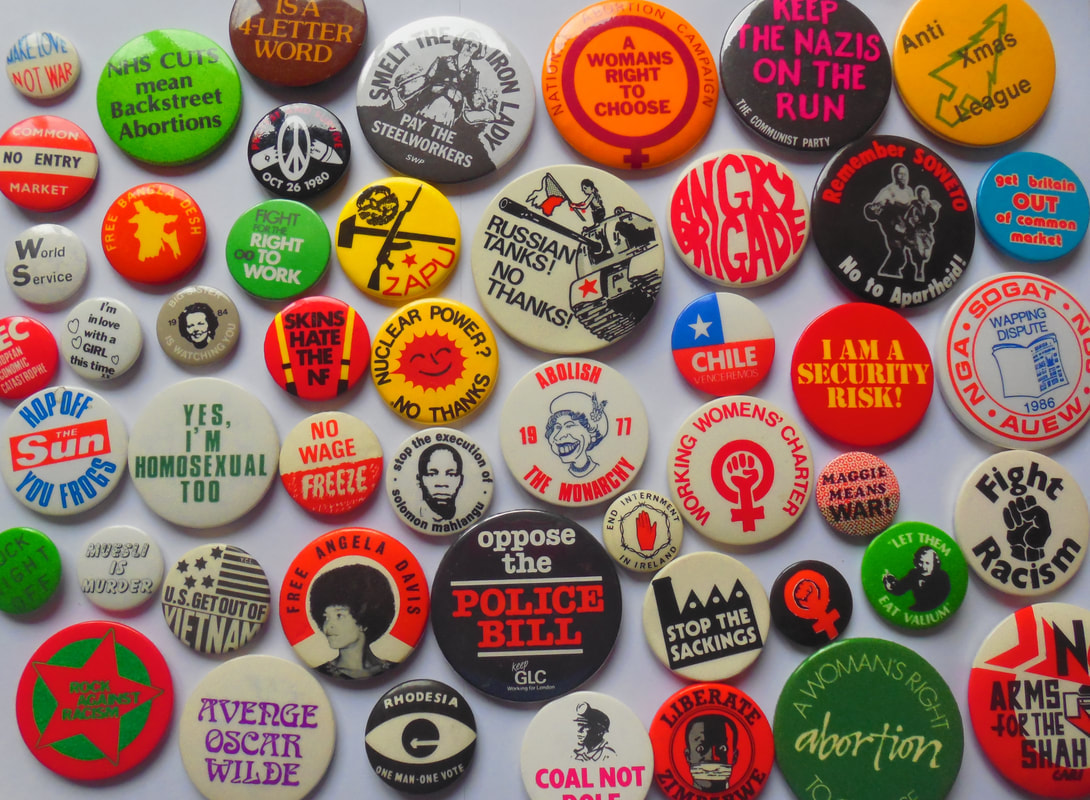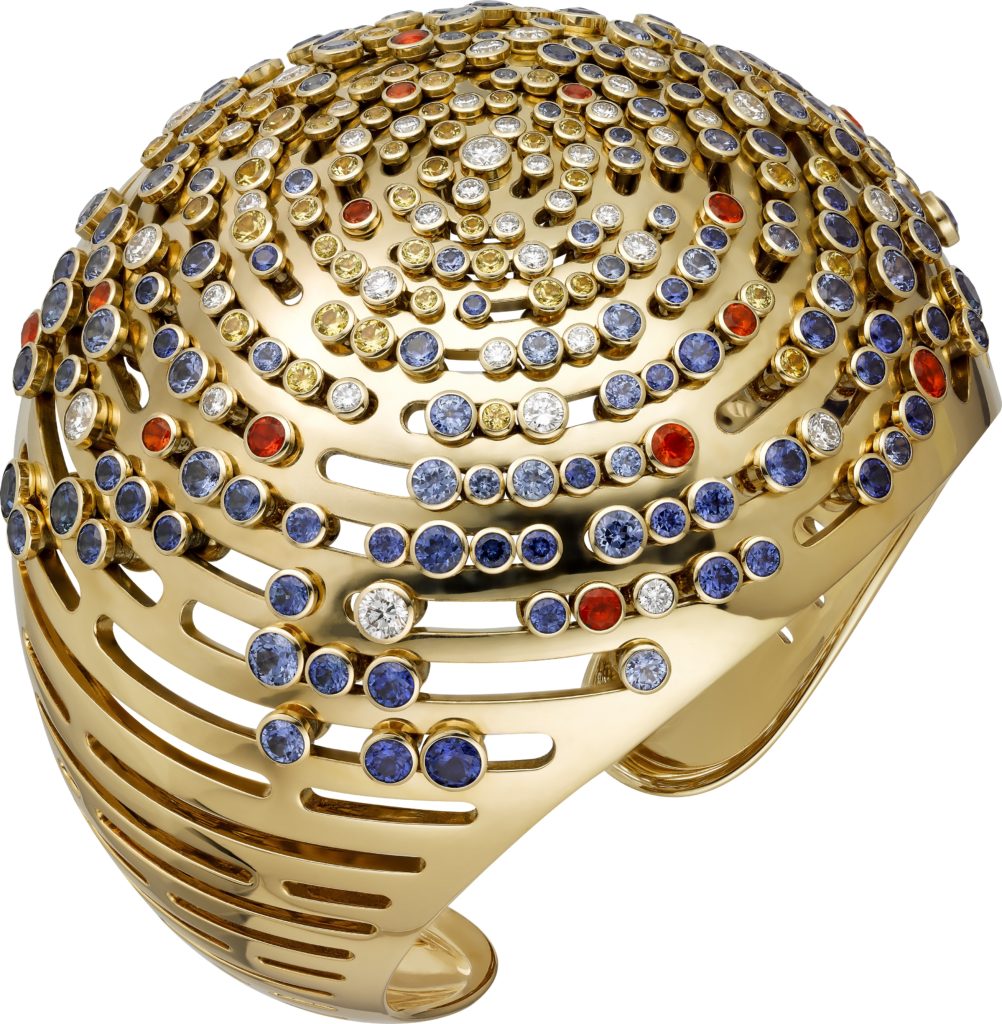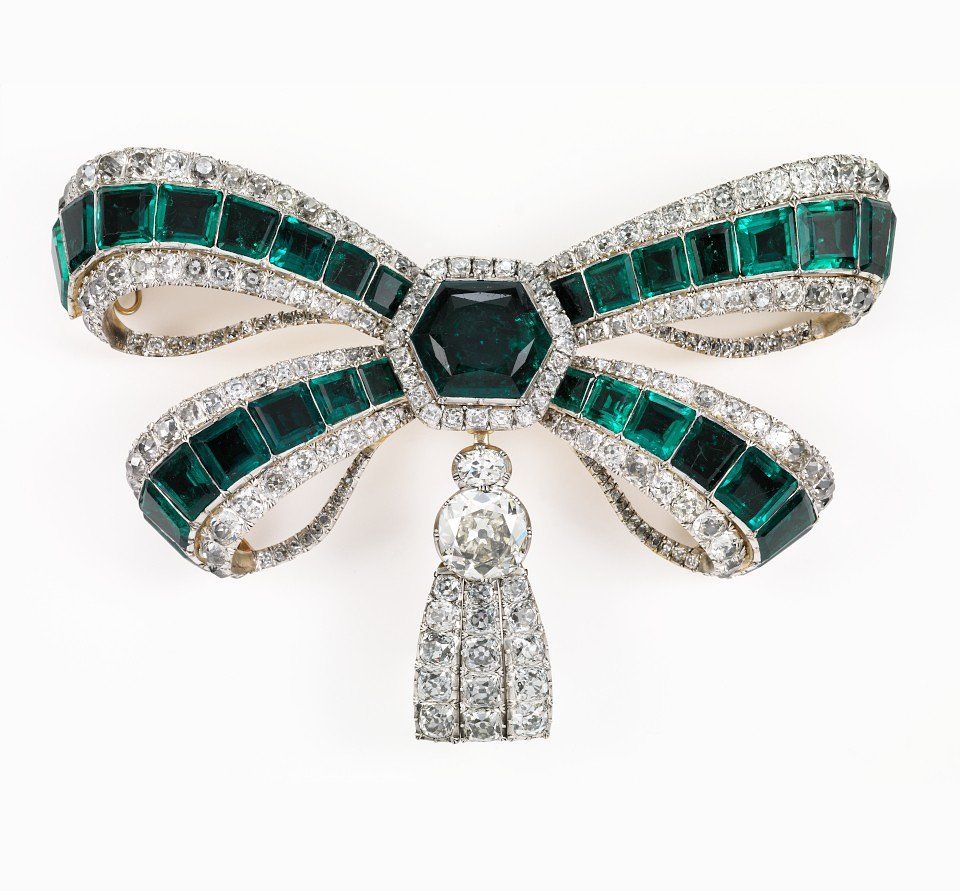Who among you has never worn a badge? These little round pins, usually made of aluminium, are inextricably linked to American culture. But they are now found everywhere and in every country. Like pins, they are now collected and therefore sometimes very sought after. Whether they display a political slogan, a personal opinion, your favourite rock band, or are simply decorative, badges are real communication tools. Let’s take a look at this little jewel, most often circular in shape, which is more precious than it seems.

Some political badges from the collection of Mr Andrew Whitehead. Most of them date from the 70s and 80s. Photo: Andrew Whitehead
1- The first badge
Badge, insignia, medal, pin, button, it is important to define what we are talking about. If we delve into the history of political badges, it is possible to go back to antiquity. The notion of a slogan goes back at least to the Roman Empire, where the words SPQR “Senātus Populusque Rōmānus” can be found on very many buildings from 80 BC onwards. This slogan, which means “the Senate and the Roman people”, is the emblem of Roman political power.

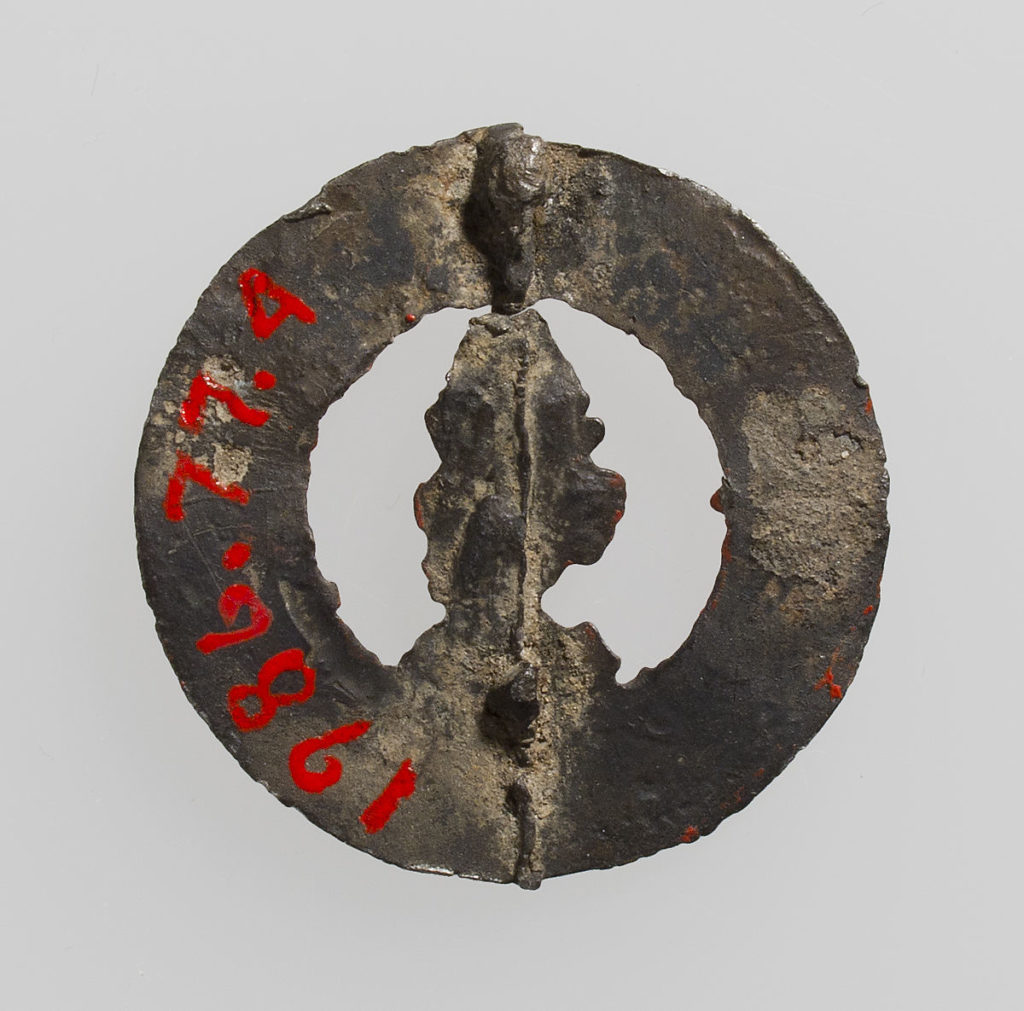
Pilgrim’s brooch (badge), 14th or 15th century, representing St Thomas. Photo: MET Museum
Later, the notion of a badge is found on an object testifying to the pilgrimage of the Grand Carmes of Toulouse. Discovered in London, this piece is described in a 1987 article by Jean-Michel Lassure and Gérard Villeval in “Archéologie du midi médiéval”. Discovered in 1983 by Brian Spencer, then Curator of Medieval Antiquities at the Museum of London, during excavations at Swan Lane, this jewel is dated between the end of the 13th century and the very beginning of the 14th century. Another example is the metal elements with a boar that were the emblem of Richard III. These badges were issued between 1472 and 1485. English experts believe that this piece was intended to be worn on a hat. A rare example in silver and gold is in the British Museum. But this institution holds a truly exceptional political object: the Dunstable Swan. This incredible gold and enamel brooch is over three centimetres long and depicts a swan with a crown around its neck. Discovered during excavations in a former convent in Dunstable in 1965, the piece entered the museum in 1966. This piece of jewellery from the 1400s features the symbol of the House of Lancaster (the crown around the neck) and that of the House of Bohun (the swan). In 1380, Henry of Lancaster married Mary de Bohun and added the swan to his arms.

The Swan of Dunstable, circa 1400, gold and enamel. Photo: The British Museum
We could digress on political jewellery for a long time and on the history of the politically oriented brooch even longer. One of the earliest known round ‘badges’ is in the MET Museum in New York. It dates from the 15th century and depicts the head of St Thomas. It was probably made in the Canterbury area of England. The same museum also holds a French example similar in form and from the same period with the Virgin. In the United States, the “first” round badges date from 1789. They were buttons to support the candidacy of George Washington and to honour the first President of the United States. While shouting a slogan can be a good thing, spreading it widely allows it to become known more quickly.
2- The badge in the 19th century
The American campaign of 1828, in which Andrew Jackson was pitted against John Quincy Adams, marked a turning point in political communication. On this occasion, Jackson mass-produced objects featuring his military successes to encourage the American people to place their trust in him. Warmed by his defeat four years earlier, he did not skimp on the means. And among the many souvenirs that we know of him, we find of course the buttons and badges with his effigy. It is important to understand that it was not natural to develop a commercial activity during a presidential election before this one. And 1828 changed the situation for good, because despite a chaotic campaign of rare violence between the two candidates, it was Jackson’s “goodies” that made the difference. The invention of photography also changed the process. As early as the 1860s, badges with Abraham Lincolm’s face were being produced. He was perhaps the first person to have his picture on a political object.

Campaign badge for Abraham Lincoln, circa 1860. Made by the Scovill Manufacturing Company of Waterbuty, Connecticut. This one is in the National Museum of American History. Photo: NMHA
Most of the early badges were made by companies that specialised in button design. This is the case with the Lincoln badges. This makes sense, given the shape of these funny pieces of jewellery. In the middle of the 19th century, the Englishman Daniel Spill filed a patent for a material that would soon be called celluloid. In 1869, the American John Wesley Hyatt made the manufacture of this strange material much easier by reworking the Parkesine formula. This engineer first invented a substitute for ivory that could be described as the ancestor of plastic. In 1870 he founded the Albany Dental Plate Company to produce piano keys, false teeth and billiard balls. Based in Albany, New York, the company moved in 1873 to Newark, New Jersey. And the location is not insignificant in the history of badge making.

Very rare badge to celebrate the capture of Pretoria by General Lord Roberts in June 1900. Photo: Andrew Whitehead
3- The Whitehead & Hoag Company of Newark, New Jersey
In 1892, printer Benjamin S. Whitehead joined forces with paper merchant Chester R. Hoag in Newark. They co-founded the company Whitehead & Hoag. They soon purchased patents for the manufacture of buttons. As early as 1893, the company acquired Amanda M. Lougee’s patent to protect the insertion of a photograph under celluloid film in order to protect it from knocks and shocks. And in 1896, the “Badge Pin or Button” was invented, the button badge was born. W&H had to buy the rights from G.B. Adams, who had registered it.



1- The two founders: Mr Whitehead and Mr Hoag. Photo: Jed Hake
2 and 3-The patents of George B. Adams’ patents. Photo: Vintage Corks Crews
The company was soon inundated with orders and the success of the badge was not to be denied. One of the first customers was the American Tobacco Co, which ordered millions of badges to promote its cigarettes. 1896 marked the arrival of these strange jewels as much as the campaign for President McKinley. The country was soon saturated with badges, they were absolutely everywhere and the public’s infatuation with these little round pins convinced the most recalcitrant to produce more and more. As early as 1890, W&H opened branches in the USA as well as in England and Australia. There was even an office in Argentina. The company’s activities changed somewhat with the Second World War. Shortly after the end of the war, Hoag died. The year was 1953. The company was bought by one of its main competitors, Bastian Bros. a button company founded in 1895. The buyer closed the factory and ordered the destruction of the company’s archives. However, he continued to use the name until 1964-1965. Bastian Bros. still exists and continues to manufacture medals and badges.
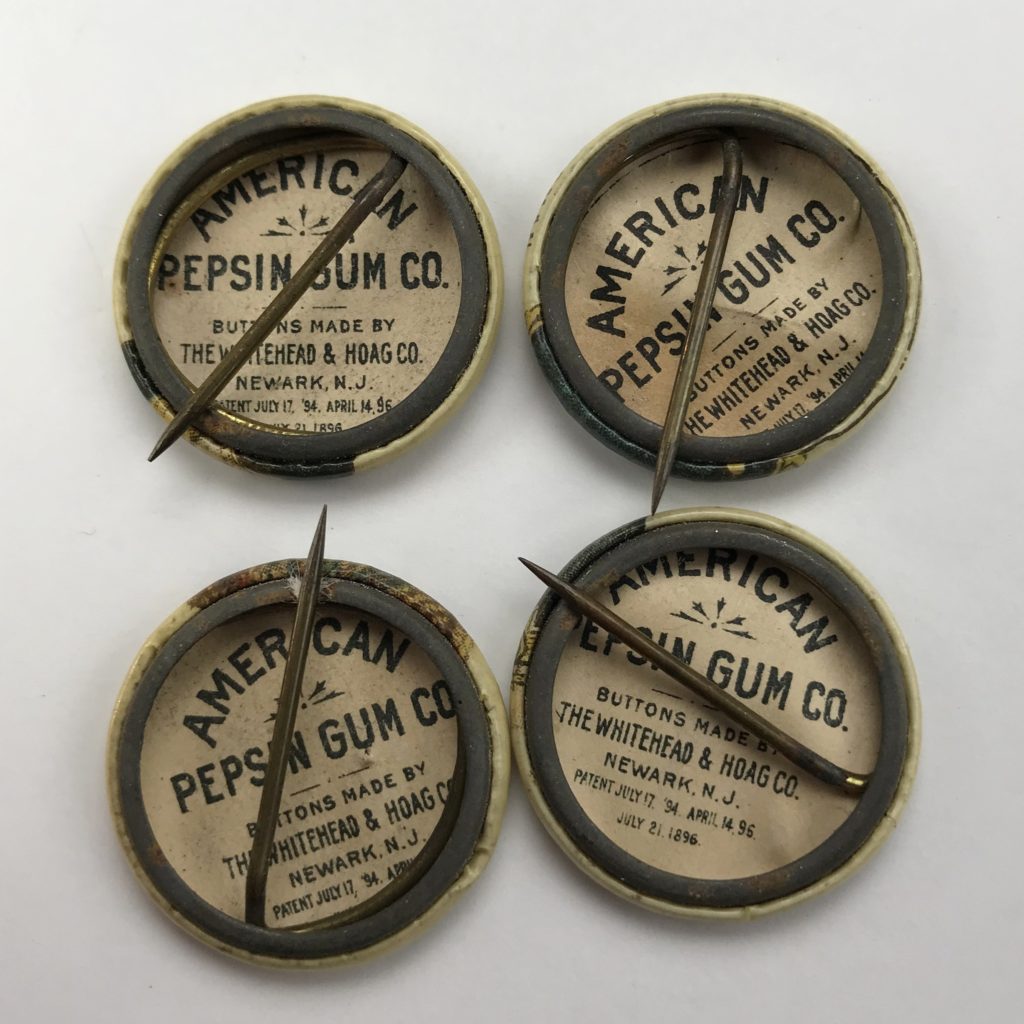
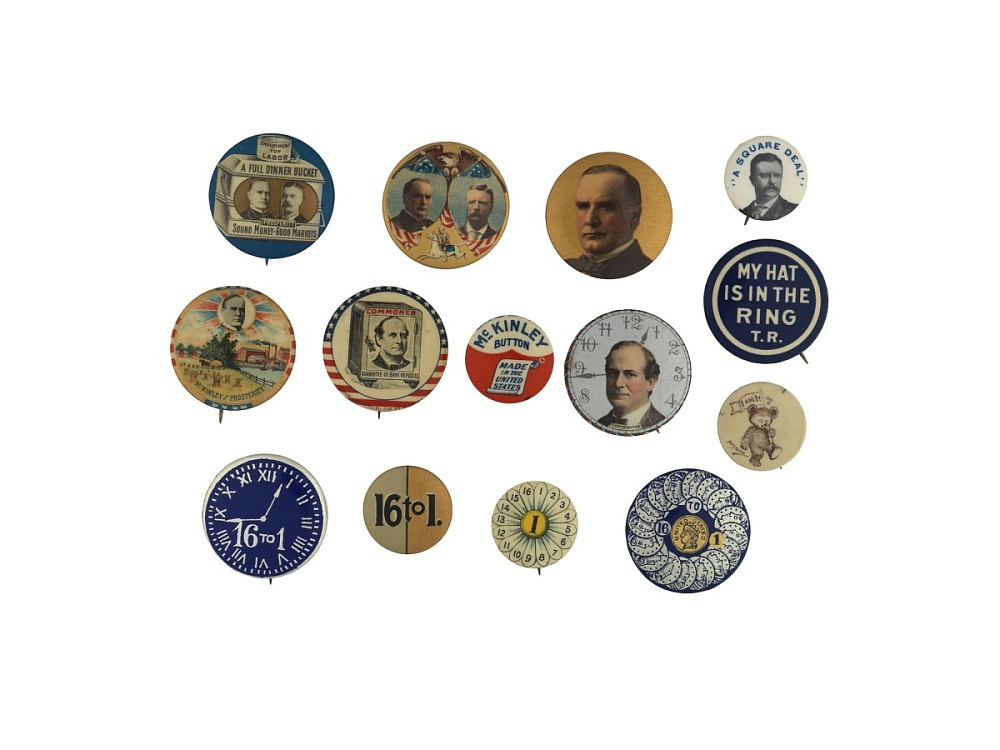

1- Badge for the American Pepsin Gum Co.
2- Badges for the McKinley election. Photo: NMAH
3- Signatures for W&H. Photo: Lang Antiques
4- And nowadays?
The badge arrived in France in the 1960s and 1970s. But in the United States, it was already widely used in political communication at the time. The badge also made its presence felt during the great student demonstrations and the stands taken against the Vietnam War and in favour of minority rights, particularly those of the black American community. Today, it is very easy to find one. Often free, they are distributed at demonstrations and at the entrance to trade fairs, but they can also be collected. Some badges have quotations and can cost several thousand dollars. You could spend hours looking at them and searching for them on the internet. But to conclude this story, I offer you these two badges with jewellery designs from the house of Dael & Grau. They were made for the 2018 exhibition at the La Piscine museum in Roubaix. When I tell you that the badge is also a piece of jewellery… See if you can still find them!

Two badges edited by the museum La Piscine during the exhibition dedicated to the house Dael & Grau. Personal photo.
See you soon!
